The main event on our first day in Salina was a cooking class (an Airbnb experience) with host Maria and her husband “Chicho”. We learned how to make her family recipe for caponata.
Caponata is a salad or appetizer eaten as a starter dish. It is savory, sweet, and sour, comprised of sauted vegetables combined with salty capers, sweet raisins, a spike of vinegar and optional briny olives. Caponata can be served hot, cold or room temperature. We have had all three on this trip.
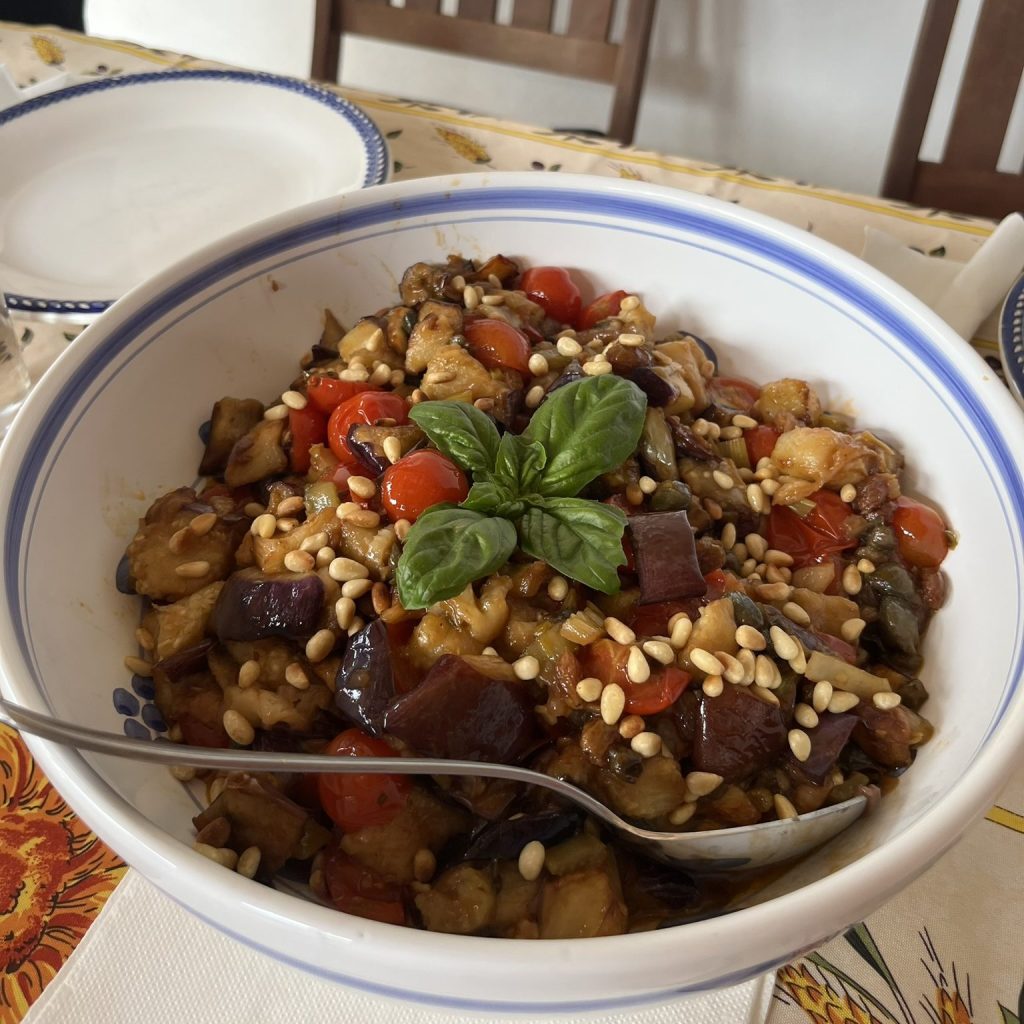
Our host’s home is in the village of Valdichiesa on the north side of Salina. We took the local bus to reach their home. It is only 11 kilometres but it took an hour and 20 – most of which was spent at a bus stop in Malfa waiting for our second bus.
Our hosts grow most of their own produce in their garden plots. Their kitchen is outside on ground level veranda and I don’t think they have an indoor kitchen. They use their island home from Easter through November and spend the winters at their home in Sicily (their mainland).
Ingredients were ready for us – quanities are approximate – 4 eggplants cubed, 2 red onions diced, whole head of celery chopped including the leaves, halved cherry tomatoes, golden raisins soaked in water, pine nuts, white vinegar, sugar, and capers. The capers here are much larger than the typical ones sold in jars at home. The caper plant is ubiquitous and are a staple of Aeolian cuisine and considered a true delicacy.
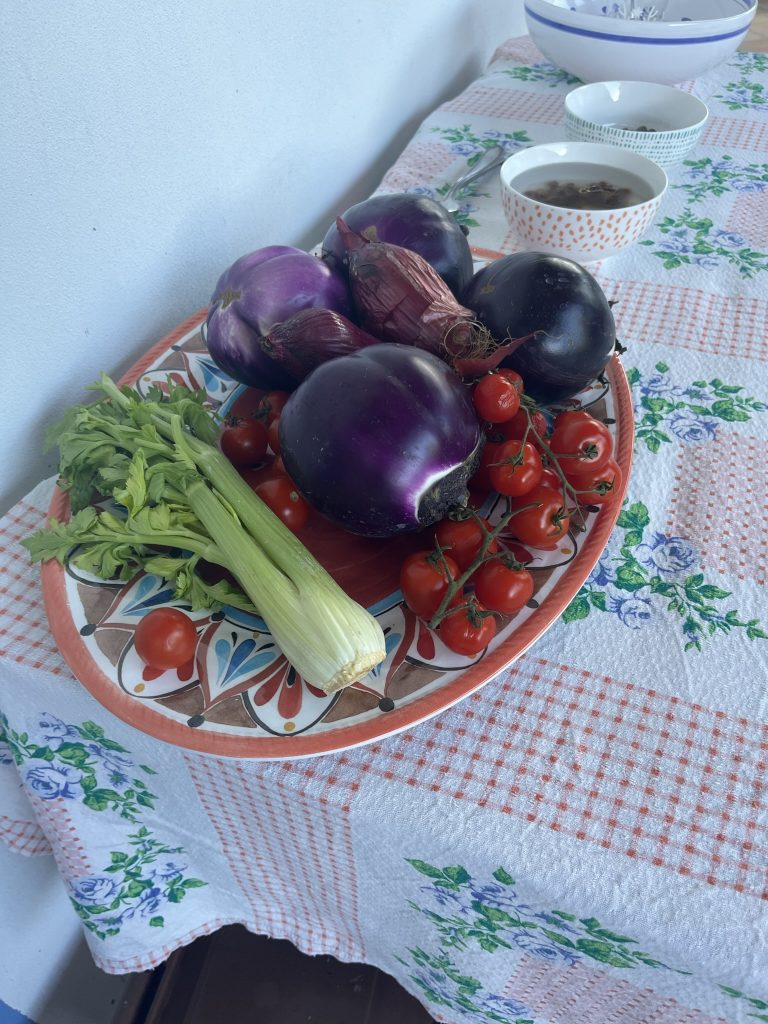
The onions and celery were sauted slowly to caramelize the onions, adding some water while cooking. The cubed eggplant was fried in sunflower oil (no pre-salting). When the onions were caramelized, we added the capers and later the cherry tomatoes. In the meantime the raisins were soaking in water and the the pine nuts were toasted in a dry pan.
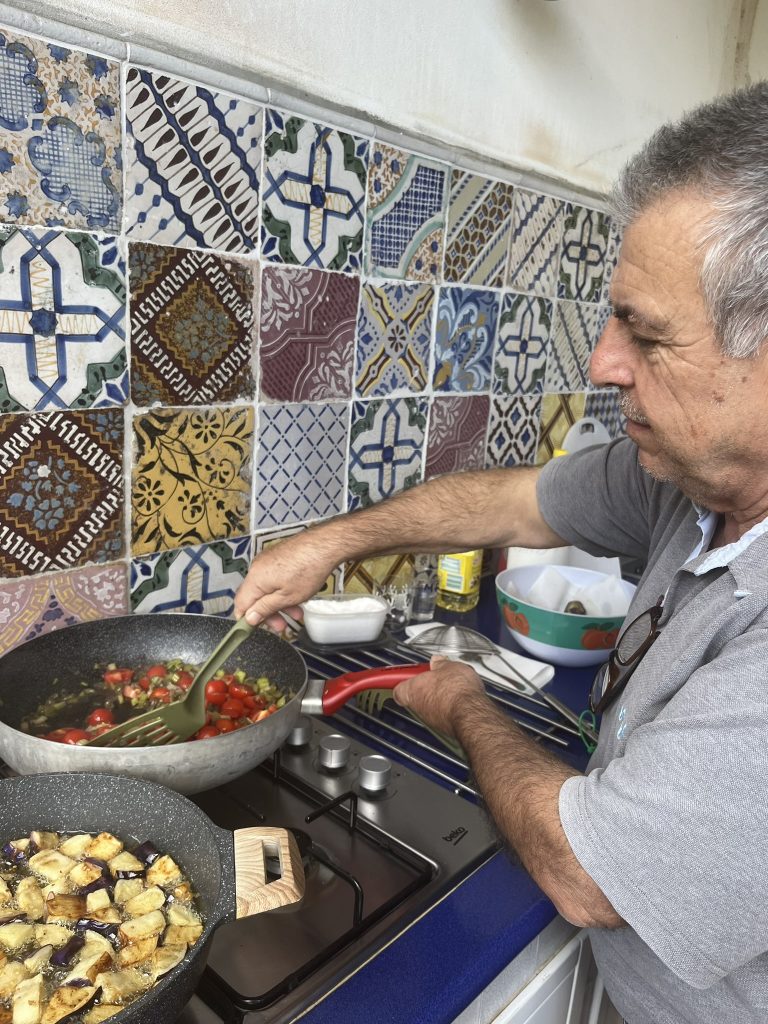
When the vegetables were ready, we added the cooked eggplant. The “secret” ingredient of Maria’s dish was a white vinegar and sugar mixture added to the vegetables. She vigorously mixed the sugar in about 1/2 cup of white vinegar until dissolved. This was added to the vegetables along with the raisins. The pine nuts and basil leaves were added as a final garnish. Our host explained that this was her grandmother’s local Sicilian recipe.
An extra treat was fried sage leaves dipped in a batter made with flour, beer and yeast. The sage leaves were huge and tasty.
We finished the meal with a taste of homemade malvasia, a sweet dessert wine made on the island, along with small traditional cookies, both made by our hosts. The island has about nine wineries.
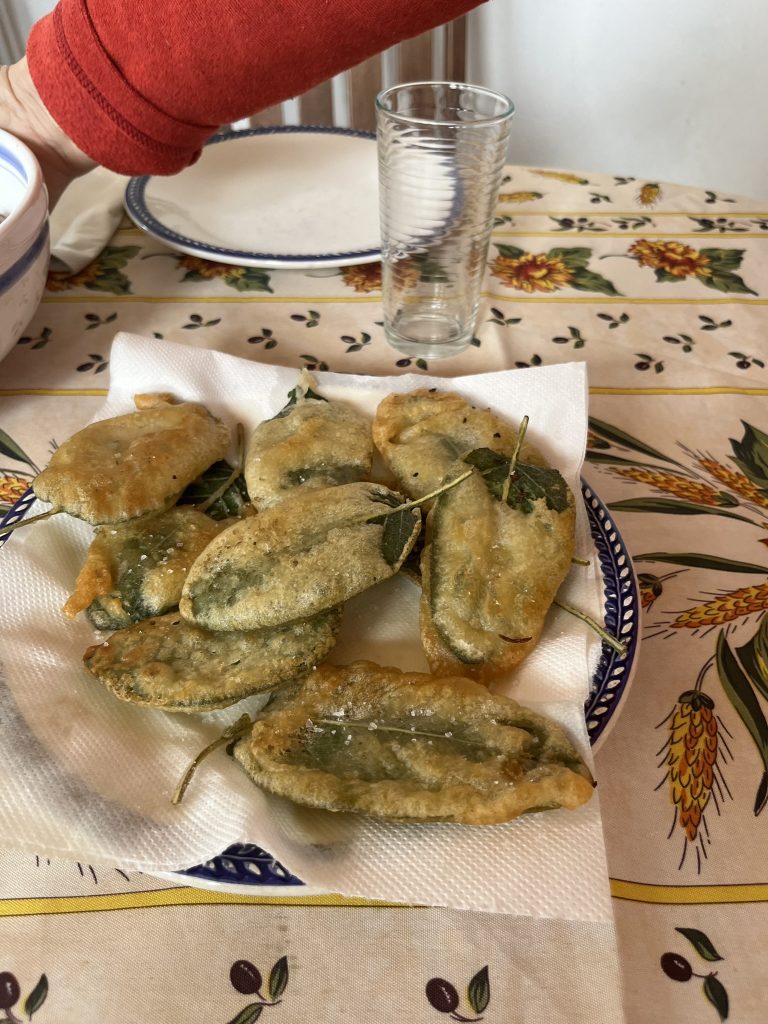
In the evening we wandered the streets in the town doing a little shopping and exploring the streets of this beautiful village. Salina has retained its traditional architecture with most of the old stone buildings modernized inside and out. The Aeolian Islands have their own style called Aeolian architecture. The building materials are local: lava stone to get solidity, pumice stone for the external walls, tuff stone for the terrace floor. The buildings are painted in bright colors with decorative doors. The buildings are modular and built in cubes that allow the building to expand as the family needs change. A few of the old stone buildings, probably dating to 18th and 19th centuries, stand forlornly with for sale signs. The main part of town has a lovely promenade on the waterfront that extends for maybe a mile or two.
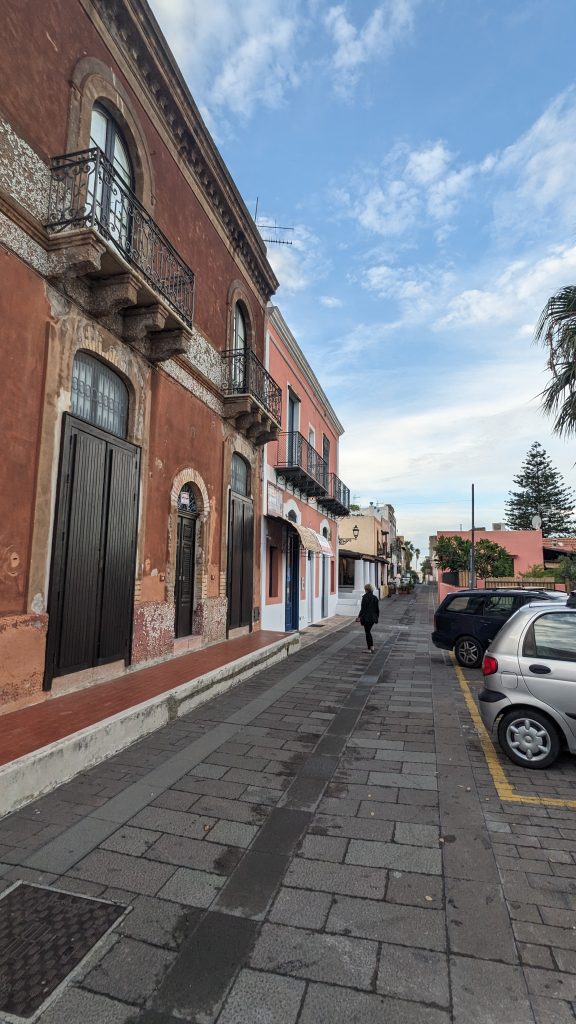
We found a little waterfront restaurant for our afternoon apertivo. There are many spots on Salina for enjoying a drink and snacks at the end of the day. We finished up the day with a simple meal on our veranda. Our rental apartment has a beautiful outdoor space facing east with views of the sea and Lipari Island.
